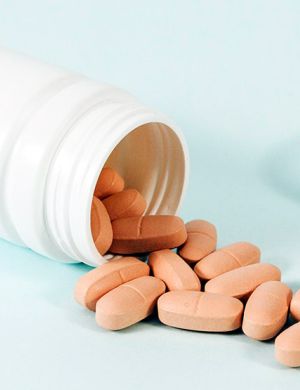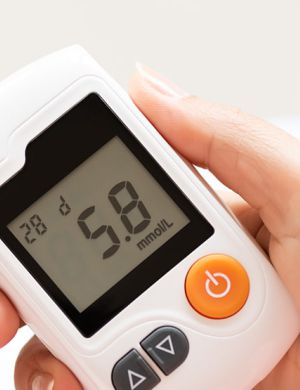
Medical Device and Restricted Hazardous Substances
RoHS stands for Restriction of Hazardous Substances, and impacts the entire electronics industry and many electrical products as well. The original RoHS, also known as Directive 2002/95/EC, originated in the European Union in 2002 and restricts the use of six hazardous materials found in electrical and electronic products.
All applicable products in the EU market since July 1, 2006 must pass RoHS compliance. Any business that sells applicable electrical or electronic products, equipment, sub-assemblies, cables, components, or spare parts directly to RoHS-directed countries, or sells to resellers, distributors or integrators that in turn sell products to these countries, is impacted if they utilize any of the restricted 10 substances.
RoHS 3 (EU 2015/863)
RoHS 3 (EU Directive 2015/863) adds Category 11 (catch-all) products and adds four new restricted substances – all phthalates. The four phthalates are mainly used as insulation plasticizers, and are on the REACH list of SVHC (Substances of Very High Concern). The expanded list for RoHS 3 is thus as follows:
- Cadmium (0.01 %)
- Lead (0.1 %)
- Mercury (0.1 %)
- Hexavalent chromium (0.1 %)
- Polybrominated biphenyls (PBB) (0.1 %)
- Polybrominated diphenyl ethers (PBDE) (0.1 %)
- Bis(2-ethylhexyl) phthalate (DEHP) (0.1 %)
- Butyl benzyl phthalate (BBP) (0.1 %)
- Dibutyl phthalate (DBP) (0.1 %)
- Diisobutyl phthalate (DIBP) (0.1 %)
Extension exemption: Of note is that medical devices have a two-year extension to meet RoHS 3 compliance:
“The restriction of DEHP, BBP, DBP and DIBP shall apply to medical devices, including in vitro medical devices, and monitoring and control instruments, including industrial monitoring and control instruments, from 22 July 2021.”
Category 11 products include all other electronic and electrical equipment not covered under the other categories. Included are 2-wheeled vehicles, electronic nicotine delivery systems (ENDS) such as e-cigarettes, cannabis vaporizers and vape pens. Also included are electrical cables that are less than 250V working voltage.
With the rapid spread of digitization, the world’s production of electrical and electronic devices is exploding. Besides mobile devices, think about the coming wave of IoT, smart home assistants, robots, drones, 3D printers, and home medical devices to all corners of the planet…they are all regulated under RoHS.
EU RoHS specifies maximum levels for the following 10 restricted substances. The first six applied to the original RoHS while the last four were added under RoHS 3, which took effect July 22, 2019.
- Cadmium (Cd): < 100 ppm
- Lead (Pb): < 1000 ppm
- Mercury (Hg): < 1000 ppm
- Hexavalent Chromium: (Cr VI) < 1000 ppm
- Polybrominated Biphenyls (PBB): < 1000 ppm
- Polybrominated Diphenyl Ethers (PBDE): < 1000 ppm
- Bis(2-Ethylhexyl) phthalate (DEHP): < 1000 ppm
- Benzyl butyl phthalate (BBP): < 1000 ppm
- Dibutyl phthalate (DBP): < 1000 ppm
- Disobutyl phthalate (DIBP): < 1000 ppm
RoHS Testing Methods
The initial method used for RoHS compliance testing is by X-Ray Fluorescence Spectroscopy (XRF), as per ASTM F2617. XRF analyzers come in stand-alone, bench-top and handheld formats. Portable, on-site XRF testing using a handheld XRF analyzer is usually performed first and focuses on the parts of a product with the highest risk of containing restricted substances. Other RoHS testing methods used include Fourier Transform Infra-red Spectroscopy (FTIR) testing and sometimes Scanning Electron Microscope (SEM) testing. With the advent of RoHS 3 and the four added phthalates, additional testing is required to ascertain levels of these compounds, which are extracted with a solvent. The extraction solvent is then analyzed for the presence of phthalates using gas chromatography coupled with mass spectrometry (GC/MS) or coupled with flame ionization detection (GC/FID).
RoHS Steps to Certification
The following steps are involved for RoHS certification.
- Testing: Either on-site or XRF testing and/or lab phthalate solvent extraction testing is done to determine values of the ten restricted RoHS substances.
- Process Audit: Inspect all applicable manufacturing processes used towards RoHS compliance on-site.
- Documentation Review: Review the Bill of Materials, Technical File, assembly drawings, materials declarations, test reports, and conformance/compliance certificates from all suppliers. The Technical File must contain the following:
- General product description and design structure information
- Risk assessment of materials, parts and subassemblies
- Conformity information on materials, parts, and subassemblies
- Manufacturing documentation and records
- Harmonized standards, specifications, and conformity procedures
- Certification Statement: After a successful audit, a RoHS Certificate of Compliance (also known as a Certificate of Conformity or Declaration of Conformity) is issued.
Don’t miss out! Click here to stay in touch.
Categories
- Biopharma (47)
- Consumer Health (15)
- Cosmetics (8)
- Diagnostics (5)
- Digital Health (8)
- Food (2)
- Medical Device (100)
- OTC (3)
- Regulatory Intelligence (5)
- Standards (41)
Recent Blogs
Get the latest updates from Vistaar

Related Posts
CONNECT WITH US

Let's talk about how DDi can help you







